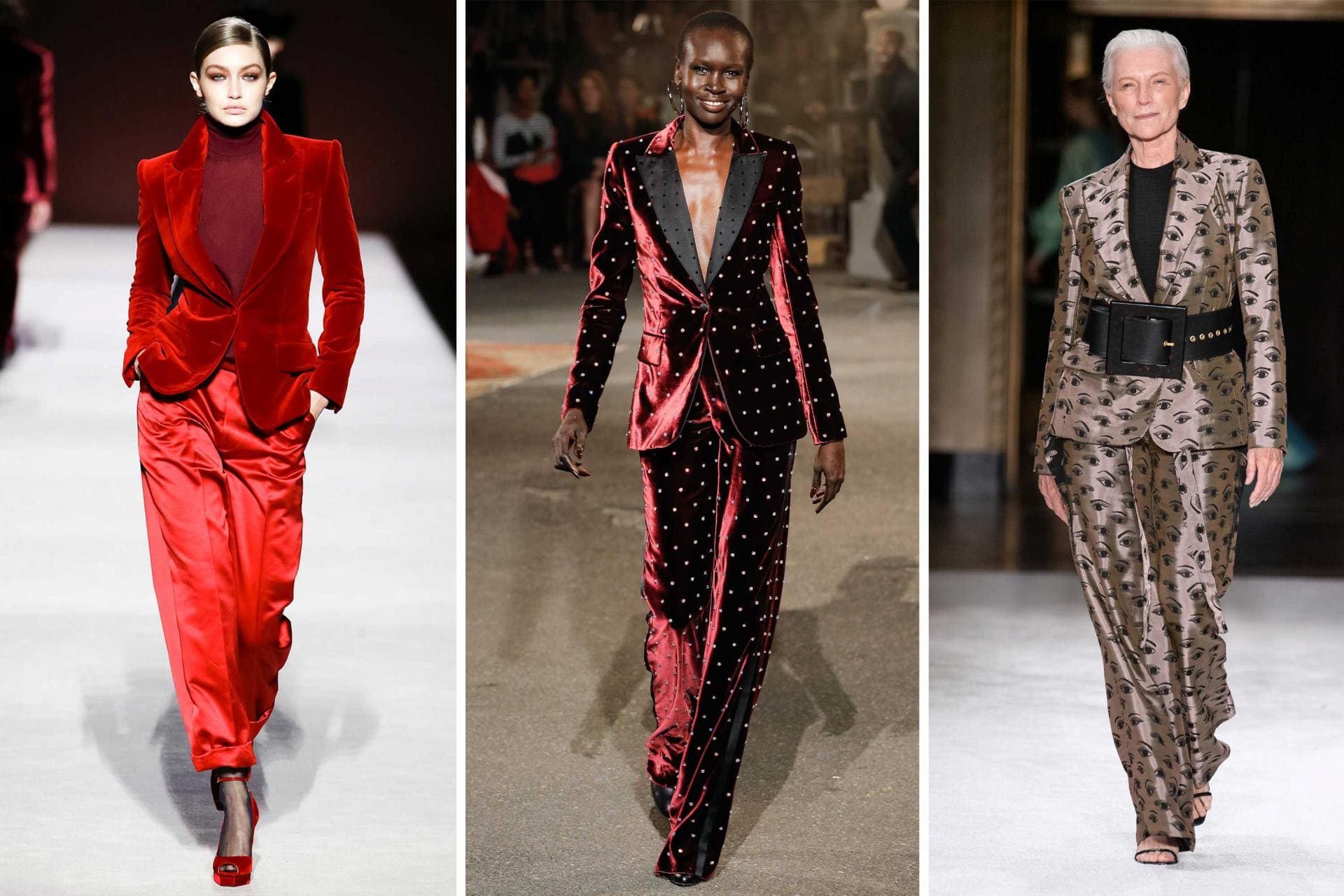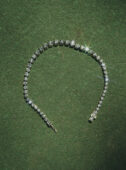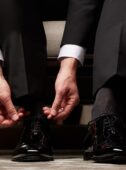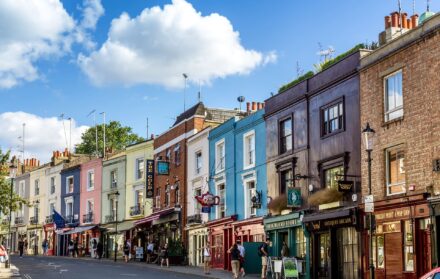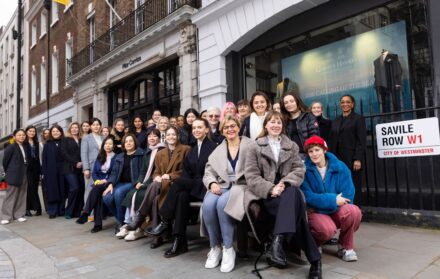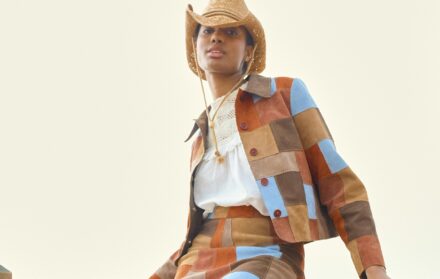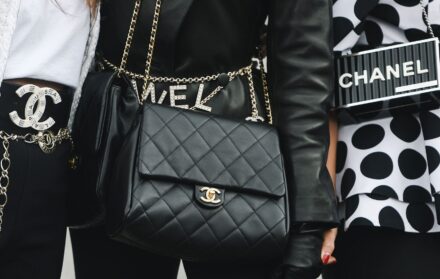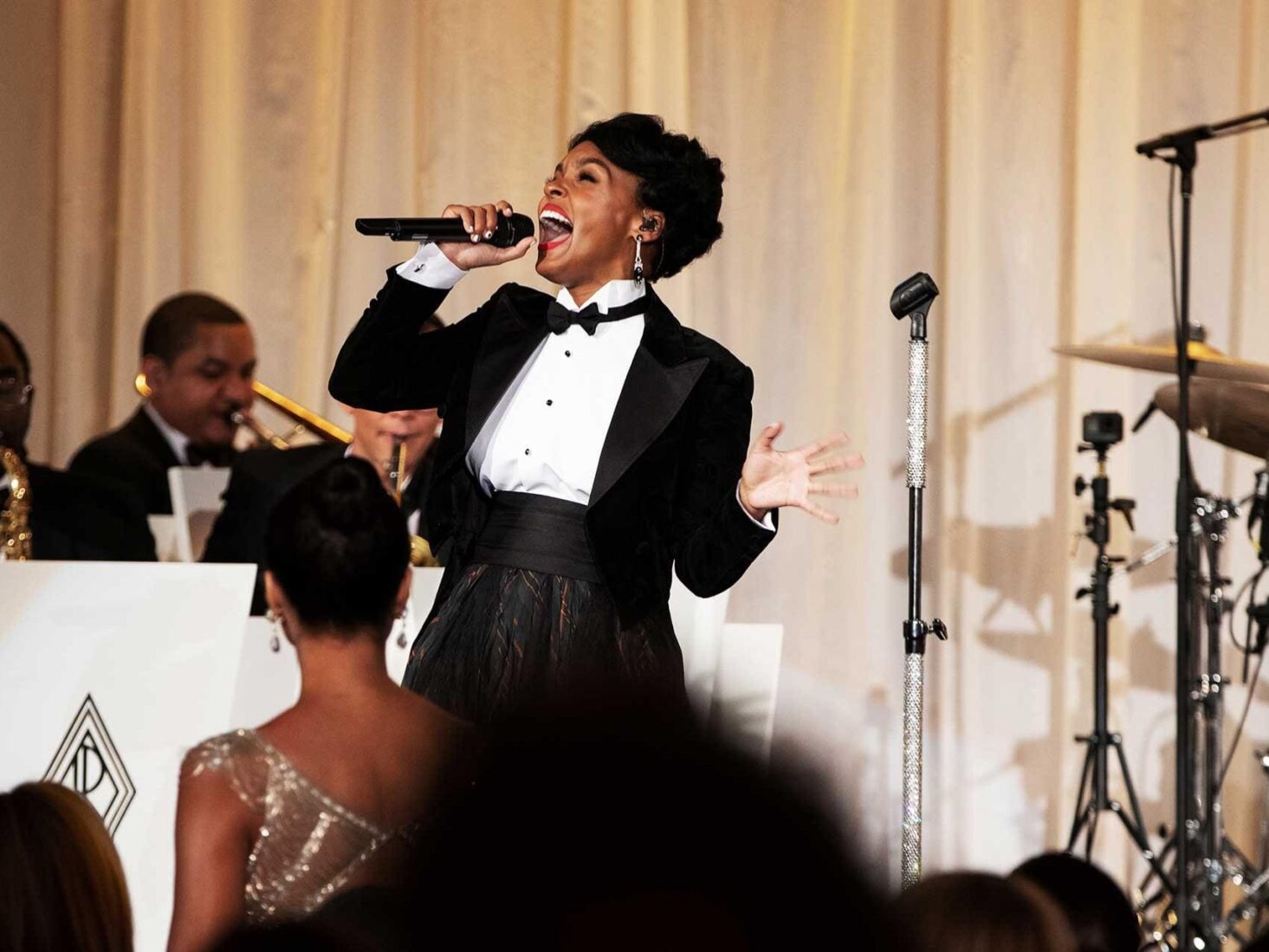
2020: the year of the tuxedo
Finally, women are smouldering in smoking jackets and turning up in turn-ups with gender-fluid, life-proof partywear
Women wearing suits is not a new phenomenon. But in the past few years, women have trodden new inroads into the tailoring landscape, a space once designed for – and by – men alone. It’s not just any tailoring, though – the focus has shifted from workwear to formal dress codes such as black tie and morning dress. The demand has always been there, but supply has been slow to catch up. Now, that’s changing. Early pioneers include Phoebe Gormley, who founded Savile Row’s first female-only shop, Gormley & Gamble; Daisy Knatchbull, the first woman ever to wear a morning suit at Ascot in 2016 and the founder of women’s tailoring house The Deck; and Cara Delevingne, who turned up to Princess Eugenie’s wedding last year in a top hat and tails by Emporio Armani. The rules of black tie are bending under the pressure of social change, from identity politics to environmental awareness. Gender is progressively understood to be fluid, no longer conforming solely to the male/female binary; the climate crisis has underlined the need for investing in quality over quantity when it comes to fashion; and women are increasingly demanding access to the simplicity and comfort of clothes that men have enjoyed for generations.
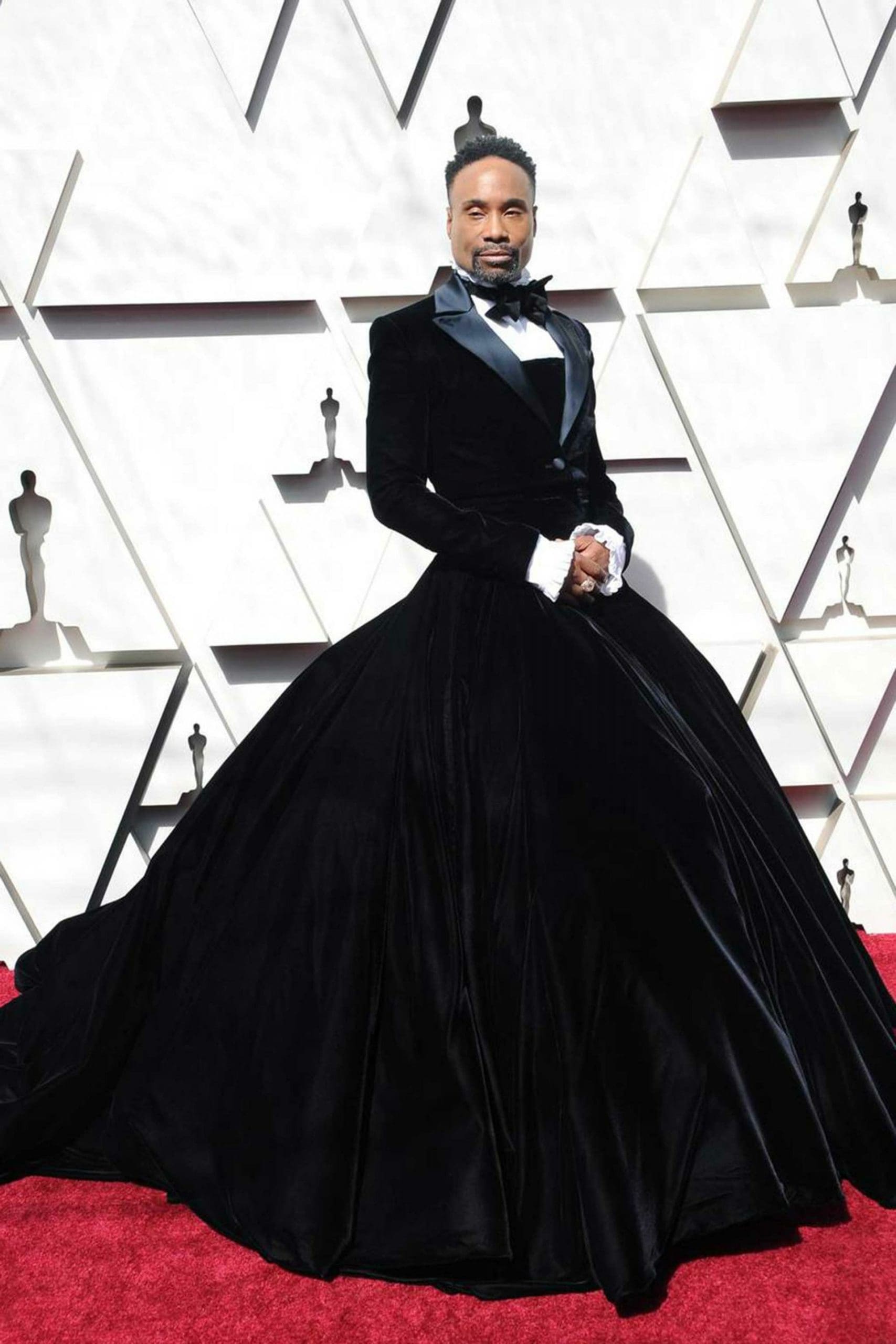
This year, red carpet events have provided a platform for designers to give black tie a much-needed update. Performer and LGBTQ+ icon Billy Porter wore a custom-made tuxedo-gown-hybrid designed by Christian Siriano for the Academy Awards in February, following the gathering of momentum behind conversations around inclusivity and representation during New York Fashion Week earlier that month. During the September shows, singer Janelle Monáe’s show-stopping performance at Ralph Lauren’s black tie event was elevated by her winged collar halterneck, starched shirt cuffs and cummerbund-style skirt waist.

Hollywood arguably presents a bubble in which this attitude is celebrated – men wearing womenswear is still shamefully taboo even in Western cultures considered ‘modern’ – but women have been commandeering menswear in the mainstream since the Second World War. While formal women’s tailoring has long been designed with ‘feminine’ details such as tapered legs, nipped-in waists and plunging necklines, actress Judy Greer pre-empted the new silhouette in an Alberta Ferretti suit at the 2019 Golden Globes. Her dinner jacket featured traditionally masculine details – a high-buttoning, double-breasted design, gently roped shoulders, wide peaked lapels and double welt pockets (yes, pockets! At last!) – and the trousers were wide-legged and floor-skimming. Greer also pulled off an oversized bow tie, an accessory whose status as a classic has been threatened by Matt Smith’s Dr Who and Hackney’s hipsters over the past decade.
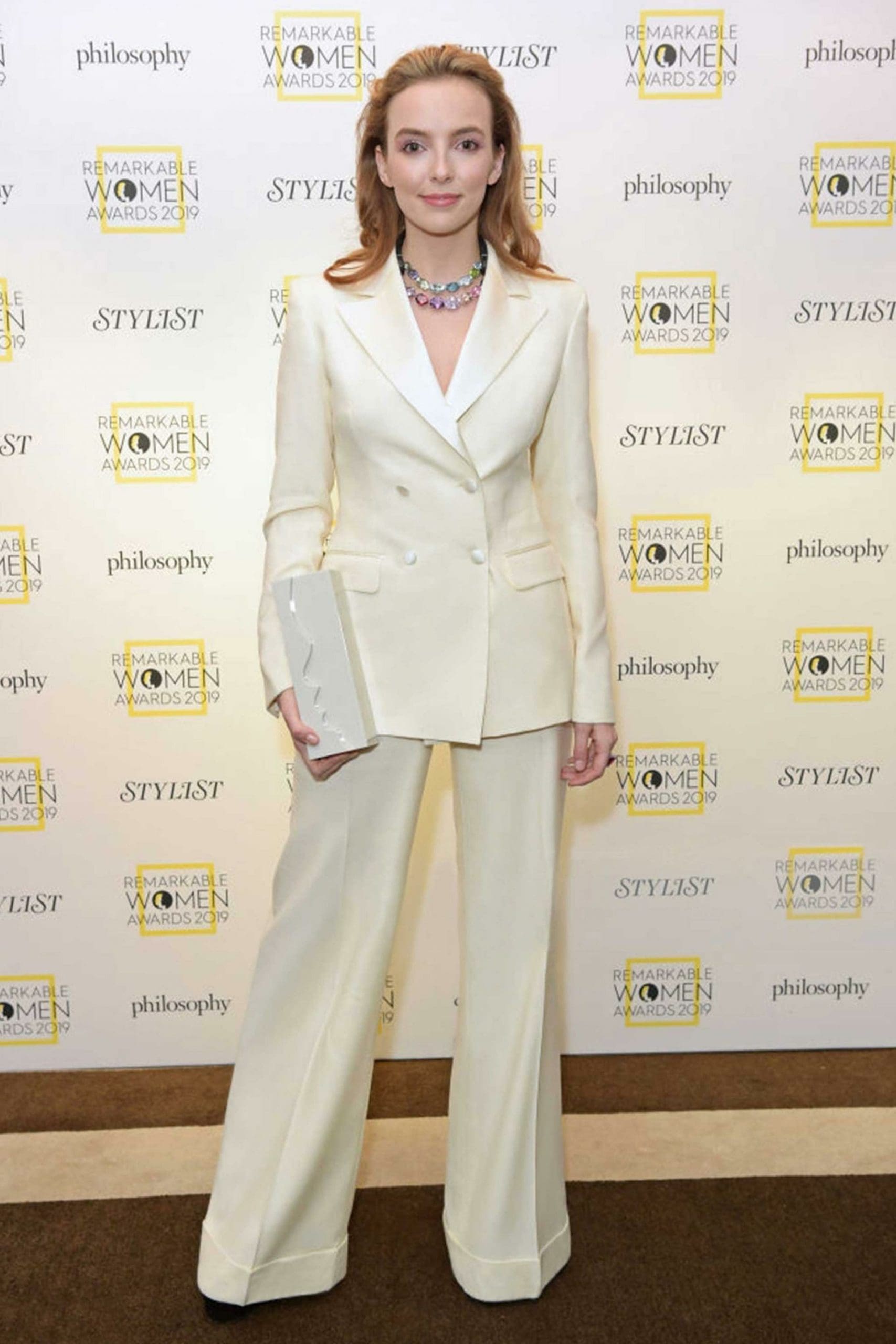
Speaking of London, the capital’s designers, collectors and craftspeople are turning the tuxedo into a 2020 staple. In the nineties, Paul Smith was one of the first high-end designers to notice that women were buying his menswear, creating a tailoring line for women in response. He’s continued the line ever since – this year’s partywear includes a crisp white bib-front shirt with a starched mandarin collar and stud-like buttons to be worn under velvet smoking-style jackets. Emma Willis, Jermyn Street’s first female bespoke shirtmaker, has also launched a women’s collection with two hand-crafted designs specifically constructed to sit beneath a tuxedo. Around the corner, Connolly’s unisex collection features a beautiful double-breasted dinner jacket with rolling silk lapels and trousers with unusual front-facing pleats. “I think that a shared wardrobe is a modern view of tailoring,” says owner Isabel Ettedgui. “Done properly it’s elegant and sexy. It feels like the future and in no way diminishes but enhances the sense of self in the wearer.”
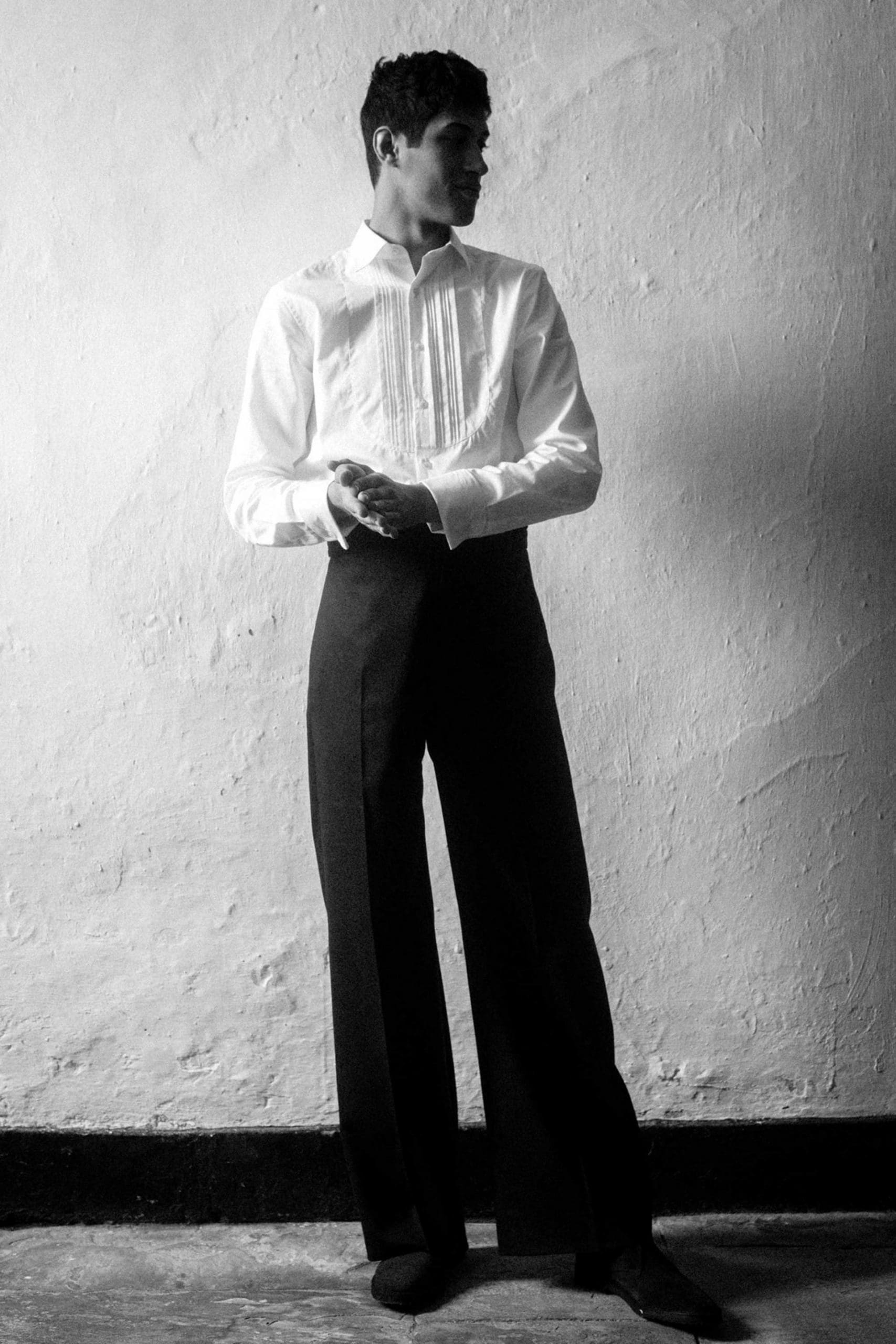
Marylebone’s William Vintage sources exquisite designs such as an eighties YSL Le Smoking tuxedo, the house’s iconic two-piece, and in Chelsea, The Deck has been fielding unexpected requests. “So many men get in touch to have suits made. Sometimes I’m like, no! This isn’t the space for you!” laughs Knatchbull, “But only because there are already so many places in London for men to go. At the end of the day, we want to make the tailoring experience as inclusive as possible. River Gallo [intersex rights activist and filmmaker] is a client, and the rules are changing – it’s up to us to keep up.” New York-based designer Gabriela Hearst, who recently opened her first London store in Mayfair, had a similar experience with her menswear debut this year. Her first customer? A woman. Menswear designer Charlie Casely-Hayford also launched a women’s collection after he realised that more women were buying his label than men; his suits are cut in premium fabrics and have wide, drapey legs. It’s menswear built for women, and it’s brilliant.

There’s an assumption that clothing undefined by traditional tropes of femininity – through silhouette, colour and ratio of flesh to fabric – fall into the trap of becoming shapeless or unexciting. But conversely, the word I kept coming across when discussing and researching this article is sexy. Nowadays, sexy is defined more by the wearer than the onlooker; it’s more about attitude than approval ratings. It just so happens that a sharp tux on a woman guarantees both.
